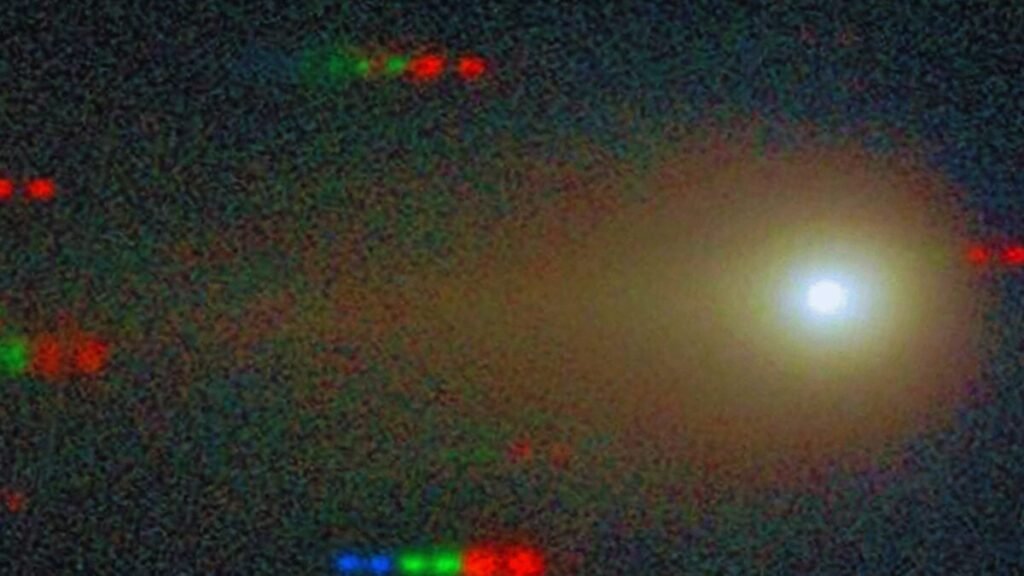Are They Concealing the Truth from Us? Rumors of Anomalies Found in 3I/ATLAS Images!

The controversy erupted on social media and YouTube: users and content creators pointed out that the official versions of a show abrupt blocks and transitions that, according to them, are not technical artifacts but something more. In some threads, “restored” versions supposedly free of that pixelation were published showing different details. Among those spreading the idea are prominent accounts in the ufology world and some independent scientists calling for an open audit.
### What the Content Creators Say: the Specific Accusation

Critics claim that when comparing the image published by with “repaired” versions, a discrepancy arises: structures that the official version does not show, or areas that appear inexplicably darkened. From there, the hypothesis arises: deliberate manipulation? Viral messages talk about “fake pixels” and interests that would prefer to keep the true nature of the visitor secret.
### What Science (and Public Data) Say
First, an objective fact: ; for example, spectroscopic analysis indicates a coma dominated by CO₂ and a complex mix of ice and dust. These works and their data are available in repositories and preprints.
Second, the “pixelated” appearance has known technical explanations: extremely small and faint objects barely occupy a few pixels on a detector; moreover, processing (stacking, noise reduction, false color assignment) and compression for networks can turn a weak signal into an image with blocks and visual artifacts. Even comparisons between instruments can show that an apparently “less powerful” mission produces a sharper frame in certain bands due to differences in reduction strategy.
### Are There Precedents of “Intentionally Smoothed Images”?
In the history of major astronomical data releases, there are examples where final products were optimized for detection (matched-filtering) or for presentation, altering the appearance compared to raw data; researchers have published “non-blur” versions of data sets when the user needs native resolution for certain analyses. This is not concealment but methodological choice — but it plays into confusion when viewed out of context.
The entry of 3I/ATLAS into our solar system, on what might be a “planned orbit” past Mars, Venus and Jupiter (with access to Earth), could be one of the most important events in modern human history. So we need to investigate further, as Avi Loeb has been doing! We have been…
— Red Collie (Dr. Horace Drew) scientist/inventor (@RedCollie1)
### And then… Are they hiding something?
To date, there is no public and reproducible evidence of malicious manipulation of ’s scientific archives. Articles and preprints with telescope results are accessible and describe a coma rich in CO₂ and other spectral signatures; anyone can download the FITS files and review metadata. At the same time, it is understandable that an image that does not “show” what we expect (a shape, a structure) fuels theories and suspicions.





